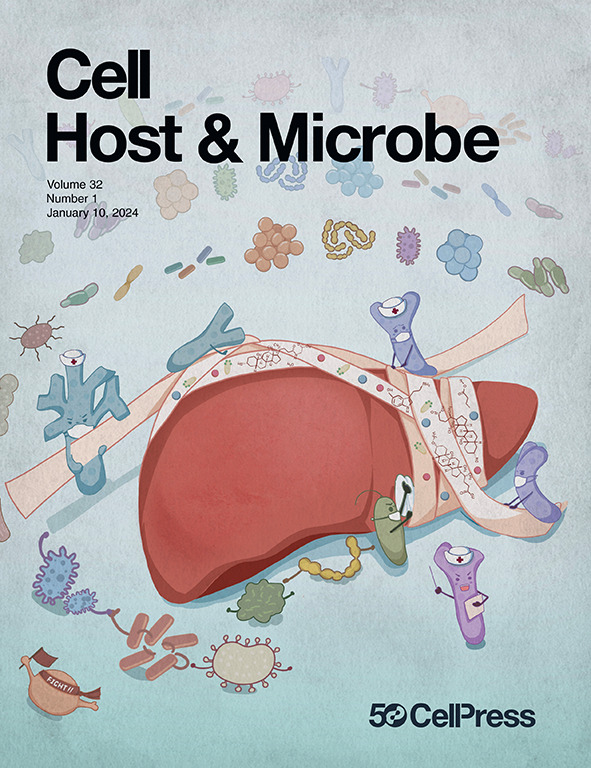根际微生物促进水稻假黑穗病真菌衣孢子休眠的打破和根定植
IF 20.6
1区 医学
Q1 MICROBIOLOGY
引用次数: 0
摘要
真菌病原菌的休眠衣孢子萌发直接影响疾病的发生和严重程度。水稻假黑穗病真菌Ustilaginoidea virens产生大量的衣原体孢子,但其萌发过程及其在植物侵染中的作用尚不清楚。本研究发现,土壤传播的衣孢子是葡萄球菌接种的主要来源,并影响RFS的发展。高敏感性(HS)和低敏感性(LS)水稻的根际微生物组分析表明,HS品种从鞘单胞菌科吸收细菌,从而通过分泌外多糖促进衣孢子休眠。由萌发的衣孢子形成的菌丝生长在根表面,侵入根皮层,并在细胞间生长,有可能进一步扩散到地上的植物部位。此外,田间试验证实,30%的原硫康唑和20%的噻唑锌处理根能有效降低RFS的发生率。总的来说,这些发现增强了我们对自然环境下衣孢子萌发的理解,并为疾病控制策略提供了信息。本文章由计算机程序翻译,如有差异,请以英文原文为准。

Rhizosphere microbes facilitate the break of chlamydospore dormancy and root colonization of rice false smut fungi
Dormant chlamydospore germination of fungal pathogens directly affects disease occurrence and severity. The rice false smut (RFS) fungus Ustilaginoidea virens produces abundant chlamydospores, but their germination process and roles in plant infection remain unclear. Here, we found that soil-borne chlamydospores are a major source of U. virens inoculum and impact RFS development. Rhizosphere microbiome analysis of high-susceptibility (HS) and low-susceptibility (LS) rice varieties revealed that HS varieties recruited bacteria from the Sphingomonadaceae family, thereby facilitating the breakdown of chlamydospore dormancy through secreted exopolysaccharides. Hyphae formed by germinating chlamydospores grew on the root surfaces, invaded the root cortex, and grew intercellularly, potentially spreading further to aboveground plant parts. Furthermore, field experiments confirmed that treating the root with 30% prothioconazole and 20% zinc thiazole effectively reduced RFS incidence. Overall, these findings enhance our understanding of chlamydospore germination in natural environments and inform strategies for disease control.
求助全文
通过发布文献求助,成功后即可免费获取论文全文。
去求助
来源期刊

Cell host & microbe
生物-微生物学
CiteScore
45.10
自引率
1.70%
发文量
201
审稿时长
4-8 weeks
期刊介绍:
Cell Host & Microbe is a scientific journal that was launched in March 2007. The journal aims to provide a platform for scientists to exchange ideas and concepts related to the study of microbes and their interaction with host organisms at a molecular, cellular, and immune level. It publishes novel findings on a wide range of microorganisms including bacteria, fungi, parasites, and viruses. The journal focuses on the interface between the microbe and its host, whether the host is a vertebrate, invertebrate, or plant, and whether the microbe is pathogenic, non-pathogenic, or commensal. The integrated study of microbes and their interactions with each other, their host, and the cellular environment they inhabit is a unifying theme of the journal. The published work in Cell Host & Microbe is expected to be of exceptional significance within its field and also of interest to researchers in other areas. In addition to primary research articles, the journal features expert analysis, commentary, and reviews on current topics of interest in the field.
 求助内容:
求助内容: 应助结果提醒方式:
应助结果提醒方式:


